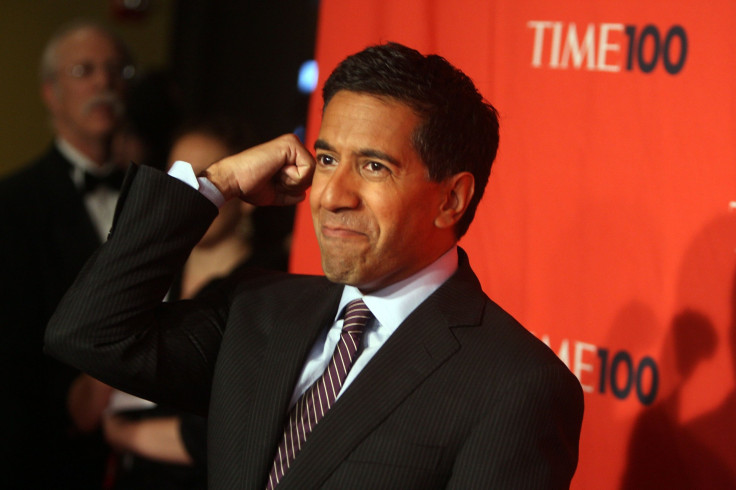No, Opioid Overdoses Are Not The Leading Cause Of Preventable Death In America

In an on-air discussion with Anderson Cooper last month, Dr. Sanjay Gupta, chief medical correspondent for CNN, threw out a startling statistic about opioid overdoses. “We’ve known that this problem was sort of festering for decades now ... but now it is the No. 1 cause of preventable death in America today,” the neurosurgeon and health journalist said during a town hall special on prescription drug addiction.
It’s a variation on a statistic we’ve heard repeated often by Gupta and others in the news media, as well as by nonprofit health groups. It’s often coupled with an even more surprising statistic that overdoses from opioids — a class of drugs that includes heroin and morphine, along with prescription painkillers like Percocet — cause more deaths per year than car accidents.
The problem is, neither of those statements is true, at least not according to the Centers for Disease Control and Prevention. While the number of opioid drug overdoses has grown dramatically in the United States over the past decade and a half (from 8,407 deaths in 2000 to 28,647 deaths in 2014), the oft-repeated superlative that they are the leading cause of preventable death is incorrect, for two reasons.
First, the term “preventable death,” as the CDC describes it, includes far more deadly killers. One CDC study found that about 92,000 deaths from heart disease alone could be described as potentially preventable. A separate fact sheet from the CDC cited smoking and tobacco use as the leading cause of preventable death, killing about 480,000 people a year in the United States, more than 16 times the number who died from opioids in 2014.
Second, putting opioid deaths side by side with car accidents shows that the latter kills more people: 33,736 unintentional motor vehicle deaths in 2014 versus 28,647 from opioids, including heroin.
The confusion likely stems from an important semantic distinction: What’s true is that drug overdoses do kill more people in the United States than motor vehicle deaths, but that’s only if you include all drugs, not just prescriptions or opioids. (In 2014, 47,055 people died from drug overdoses in the United States.) What’s also true is that drug poisoning is the leading cause of “unintentional injury,” which according to the CDC is specific to injury being the cause of death.
But again, this is true only if you include all drugs. Gupta’s reporting in on-air specials, articles and Facebook Live videos has framed the overdose epidemic as an opioid problem, often blaming prescription-writing doctors for an outsize health crisis. It’s an issue that gained enormous steam following the death of Prince in April, which last week was revealed to have been related to an overdose of fentanyl, a powerful opioid painkiller.
But broken out separately, opioids killed fewer people in 2014 than the flu and pneumonia (55,227 deaths), suicides (42,773) and unintentional falls (31,959). To call them the leading cause of preventable deaths doesn’t appear accurate in any meaningful sense.
In response to an inquiry from IBT, CNN said it would correct the record and add editor’s notes to Gupta’s articles. “We want to clarify our reporting, which says prescription drugs are the No. 1 cause of preventable death when we should have said drug overdose overall is the leading cause of unintentional death, with opioids making up the majority of those deaths,” said Neel Khairzada, a CNN spokeswoman.
By any definition, opioid abuse is a huge and rapidly growing problem: Prescription opioids are involved in at least half of all drug overdose deaths, and Courtney Lenard, a health communications specialist for the CDC, told IBT the agency is comfortable using the term “epidemic” to describe the problem.
But some advocates of pain patients worry that the crisis is being exaggerated — particularly in light of recent high-profile stories like Prince’s death — and unnecessary overstatements are fueling a culture in which everyday patients may not get the treatments they need.
“Steps to limit prescribing opioids for chronic pain run a great risk of harming pain patients without doing much to stop addiction,” Maia Szalavitz, a neuroscience journalist, wrote on the Scientific American website last month. “The vast majority of people who are prescribed opioids use them responsibly.”
Christopher Zara covers media and culture. News tips? Email me. Find me on Twitter and Facebook.
© Copyright IBTimes 2025. All rights reserved.






















